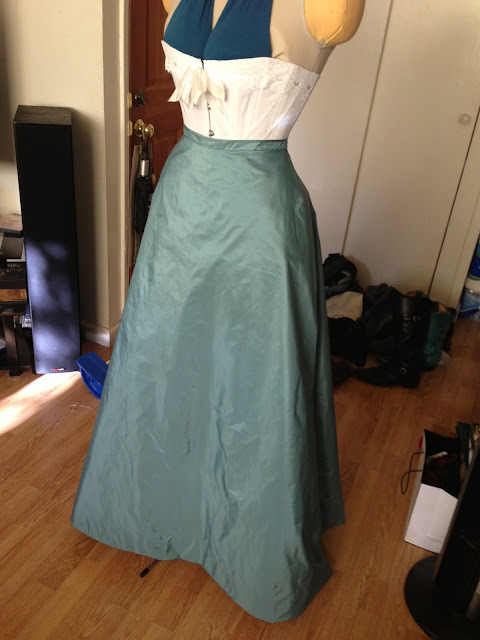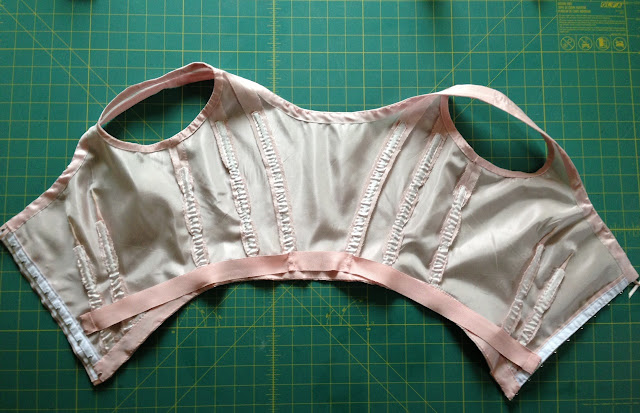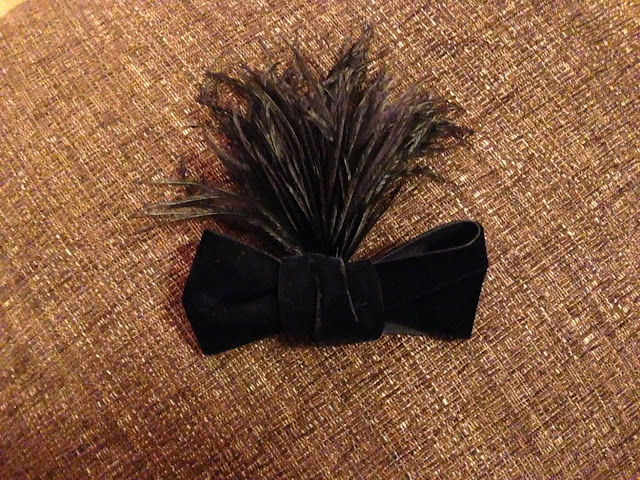I happened to read this lovely blog post on Austenprose after following a link posted to the HSF Facebook group, and decided that a Regency era hat would be just the thing. Fashionable headgear would have been de rigeur for any lady visiting a watering place such as Brighton. What else would she wear while strolling along the shore? Something jaunty and a bit sporty would suit the seaside mood perfectly.
In my internet-surfing search for inspiration, I came upon this post by Catherine at Koshka the Cat detailing the construction of her adorable red silk capote. Scrounging about in my stash, I procured all the other necessary materials, then whipped up my own version.
Without further ado, here it is, my sea-blue promenade capote:
The details:
The Challenge: #8 — By the Sea
Fabric: Blue-green silk taffeta leftover from my Gibson Girl dress
Year: 1790s-1810s
Notions: buckram, millinery wire, and cotton flannel interlining for brim; tarlatan interlining and cotton voile lining for crown; beautiful vintage ribbon, white and sheer with pale seafoam picot edge
How historically accurate is it? I must confess, I have not done extensive research for this project, so I cannot attest to its accuracy. I trust Catherine's accuracy standards, and Timely Tresses sells a pattern for a very similar hat, and I trust their research standards as well. My best guess is that this is fairly accurate.
Hours to complete: 6 hours
First worn: Will be worn to some unknown, hopefully seaside, future Regency event
Total cost: I spent about $20 on the ribbon, everything else came from my stash
























